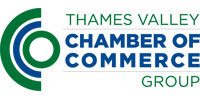(last updated July 2019)
What has been happening in the outdoor equipment sector
During the 2000s, spending on outdoor equipment increased significantly driven by outdoor clothing and footwear becoming fashionable, especially items such as fleeces and 'trainer-type' light walking boots. (According to the Outdoor Industries Association, about 60% of sales in an outdoor equipment shop are typically accounted for by clothing and footwear.)
Participation and interest in all leisure activities increased during the first half of the 2000s as people spent more and more on enjoying themselves and keeping fit. Concerns about health and wellbeing also boosted participation in outdoor activities like hiking as a way of keeping fit. Popular recreational activities, such as snowboarding and skiing, enjoyed a high profile in both the print and television media.
Despite a challenging economic climate during the late 2000s and early 2010s, consumer expenditure on outdoor pursuits remained relatively strong. This is largely because the typical outdoor pursuits enthusiast is young, with few financial responsibilities. According to research carried out by the Outdoor Industries Association in the late 2000s, only just over 10% of customers were planning to cut back their expenditure on outdoor products as a result of the economic downturn and further research published in the early 2010s found that consumers had continued to purchase significant volumes of outdoor products despite the squeeze on disposable incomes. The success of the Go Outdoors chain in the first half of the 2010s has shown that there is still strong consumer demand for outdoor equipment although their expansion to nearly 60 stores has created significant competition for independent businesses, particularly those that target the lower end of the market. The Decathlon chain has also grown in the UK and now has 44 stores, with plans to open a few more by the end of 2018, while Mountain Warehouse, which specialises in outdoor clothing and outdoor gear, had 300 stores in 2017 with plans to open 20 more in the UK and 20 abroad during 2018/19.
Despite the economic uncertainty following the vote in June 2016 to leave the EU, consumer confidence held up and the size of the outdoor equipment market grew to £8bn by 2017, with growth of 3.9% from 2012 to 2017. Forecasts up to 2022 show that the market is expected to continue to grow by a further 10%. It must be remembered, though, that expenditure on outdoor equipment is largely discretionary and rising inflation due to the fall in the value of the pound and falling consumer confidence, which could worsen if no Brexit deal is reached, could lead to consumers spending less in the future and it is likely that any reduction in consumer spending will hit expenditure on discretionary items. Other factors expected to have an impact on the market include:
- the need to reduce prices to counter growing competition, particularly from non-specialist retailers, with the inevitable constraint on margins
- the occurrence of major sporting events - spending in the sector is volatile and is affected by major sporting events like the Olympics and World Cup tournaments
- increases in the national living wage
- increases in business rates
Positive factors providing opportunities for the sector include the growing recognition of the benefits that exercise brings for health and social engagement and the initiatives by the government to counter obesity and reduce loneliness and mental health issues.
Keeping up to date with developments
Joining a trade association is an excellent way of staying up to date with developments in your industry.
It is also worth reading general newspaper reports which relate to sports shops. For example in the mid 2010s a strong trend for buying sporting clothes as leisure wear ('athleisure wear') was reported in the press because it led to Sainsbury's launching their own athleisure range and saw profits at JD Sports rise by 66%. Despite expectations that the trend would be short-lived, the popularity of athleisure wear has continued into 2018.
The Outdoor Industries Association represents the sector and produces a number of useful resources including the very detailed 'Getting Active Outdoors' as well as providing other benefits to its members. Visit their website for more information.
Trade shows
You will be able to obtain a lot of useful information if you go to a trade show for the sector, such as the Outdoor Trade Show (OTS) or SLIDE. You will be able to meet manufacturers, suppliers and importers and plan your future stock buying. You can find out more about forthcoming trade shows on the Outdoor Industries Association, SLIDE, OTS and Exhibitions UK websites.
